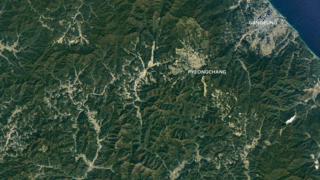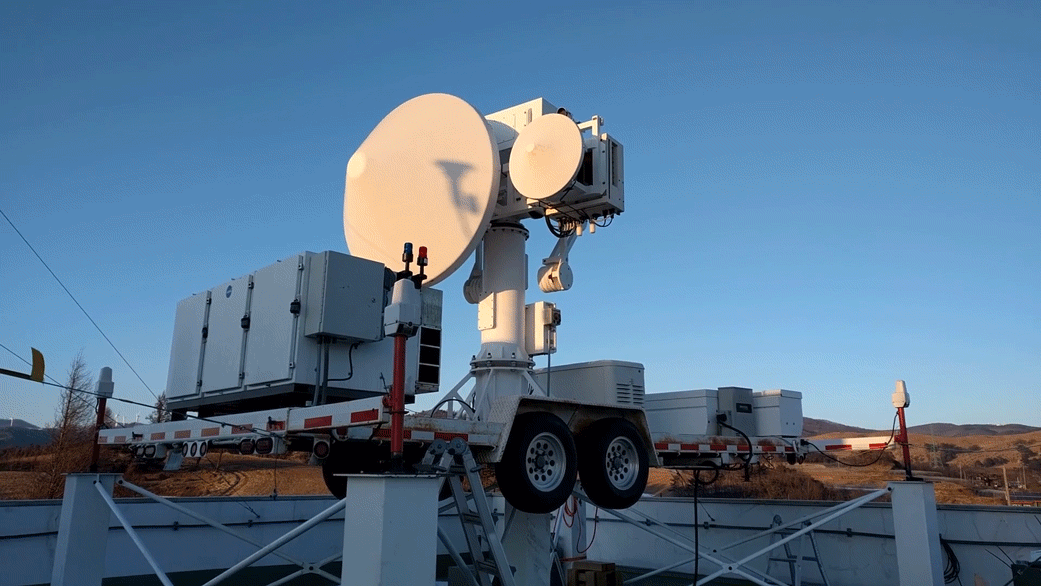How NASA Tech Helps Predict Snowfall for the 2018 Winter Olympics
Snowfall is crucial to Earth's life-giving water cycle, and fresh snow is a special bonus to Olympic athletes whose careers depend on sliding, gliding or jumping over it.
To provide the gold-medal hopefuls with forecasts every 6 hours and improve snow-prediction models for mountainous terrains, NASA has partnered with 20 agencies from about a dozen countries to collect weather data during the 2018 Winter Games in Pyeongchang, South Korea, according to a recent statement from the space agency.
The World Wildlife Fund estimates that one out of every eight people lives in the world's mountains, and according to NASA, one in six relies on the water released by seasonal snowfall collecting in the mountains. Winter wonderlands are vital, but for many people during these next few weeks, fresh powder will feel even more important. Most nations have their eyes on the dramatic snow-capped mountains around Pyeongchang to watch their most-talented skiers and snowboarders go for gold. [In Photos: South Korea from Above]

So to compare the weather experienced in the mountains with satellite and radar predictions, an international team of researchers, which includes several NASA scientists, will predict event weather by partnering with the World Meteorological Organization's World Weather Research Programme. NASA will participate in this project, called ICE-POP (International Collaborative Experiments for Pyeongchang 2018 Olympic and Paralympic Winter Games) until the end of the 2018 Paralympic Games, on March 18.
According to NASA, land-based radar instruments are typically placed in easily accessible areas on even land. But not all areas of Earth are easy to access; jagged, uneven terrain like that in northeast South Korea presents a challenge, and for NASA, it's an opportunity to improve prediction models. Vertical drops on the hills are common, too, and these can cause swift wind changes. Wind speed is especially important for athletes like mogul skiers, who zoom down bumpy slopes at high velocities.
Airflow, altitude and temperature can also affect the size of the snowflakes, which influences outdoor sporting conditions.
![The GPM Core Observatory scans the weather with microwaves and two bands of radar. [See how the GPM Core Observatory Satellite works in this Space.com infographic]](https://cdn.mos.cms.futurecdn.net/L4AZuLJ9Gk5s7RnPMTxm8h-320-80.jpg)
Satellites like the Global Precipitation Measurement (GPM) mission are important for water-cycle forecasts. However, it's sometimes difficult for the satellite to assess the size and shape of the snowflakes because the changes are caused by airflows that quickly change direction — a phenomenon that develops closer to the creviced surface. Rates of mountain snowfall are also challenging to predict from space because wind conditions can change quickly, and when that happens, snowflakes don't fall at the same speed. Plus, the flat structure of snowflakes makes their movements challenging to observe from space, NASA officials said.
Get the Space.com Newsletter
Breaking space news, the latest updates on rocket launches, skywatching events and more!
The researchers are hoping for a few good snowstorms, according to the statement. They'll compare observations from NASA's Dual-frequency, Dual-polarized, Doppler Radar (D3R) system with those from the GPM Core Observatory satellite. By comparing the models with the observations, researchers hope to get a better prediction model of snowfall on the mountains and more clearly understand how it falls.

NASA will take observations and deliver snow forecasts from 16 points near the Olympic event venues. The NASA team will work alongside U.S. colleagues from the National Oceanic and Atmospheric Administration, the National Center for Atmospheric Research and Colorado State University. The data is communicated to Olympic officials so that competition logistics can take the weather into account.
The GPM Core Observatory satellite is a joint mission between NASA and the Japan Aerospace Exploration Agency, and is designed to detect falling snow and estimate rates of rainfall from space. Every 30 minutes, GPM provides global maps of precipitation. To do so, the satellite works alongside 12 other international and U.S. spacecraft.
Follow Doris Elin Salazar on Twitter @salazar_elin. Follow us @Spacedotcom, Facebook and Google+. Original article on Space.com.
Join our Space Forums to keep talking space on the latest missions, night sky and more! And if you have a news tip, correction or comment, let us know at: community@space.com.

Doris is a science journalist and Space.com contributor. She received a B.A. in Sociology and Communications at Fordham University in New York City. Her first work was published in collaboration with London Mining Network, where her love of science writing was born. Her passion for astronomy started as a kid when she helped her sister build a model solar system in the Bronx. She got her first shot at astronomy writing as a Space.com editorial intern and continues to write about all things cosmic for the website. Doris has also written about microscopic plant life for Scientific American’s website and about whale calls for their print magazine. She has also written about ancient humans for Inverse, with stories ranging from how to recreate Pompeii’s cuisine to how to map the Polynesian expansion through genomics. She currently shares her home with two rabbits. Follow her on twitter at @salazar_elin.












